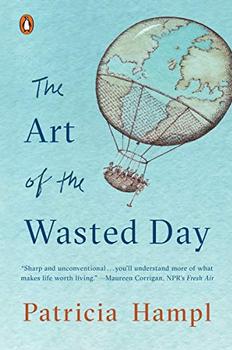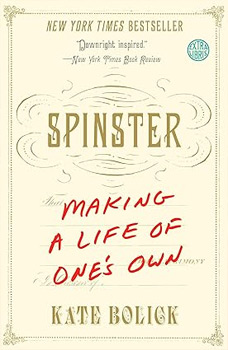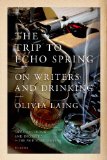Summary | Excerpt | Reviews | Beyond the book | Read-Alikes | Genres & Themes | Author Bio

Patricia Hampl wants you to know that daydreaming is not a waste of a day. Nor is spending time alone in the midst of who and what you love, like Sarah Ponsonby and Lady Eleanor Butler, two Irishwomen from upperclass families who, in 1778, escaped together to live in Wales where they spent 50 years simply studying language and literature and collecting woodcarvings. Their home is one of a few that Hampl visits on her many travels to investigate where "leisure lives are lived." She also visits the home of Michel de Montaigne, widely regarded as the inventor of the personal essay, who slipped away from the world into a room of his own to simply let his thoughts and writing come. In this context, the wasted in The Art of the Wasted Day is hard to accept. Instead, the title of these essays-as-memoir should use the word leisurely. Of course, Hempl is trying to make a point here – that a great swath of society, American society, might think such things as daydreaming to be frivolity, to be a - yes - waste of a day. But Hampl's goal is to prove that it's not. She mostly succeeds.
Hampl threads The Art of the Wasted Day with a steady presentation of beautiful imagery, both in descriptions of place and her ongoing "relationship" in widowhood with her late husband, who encourages her to be her best self, and also teases her. This is the thread that holds the book together; the reader wants to see what her husband will say next, and wants to learn more about the relationship that clearly was a great marriage.
Patience is the watchword here. Hampl's comment on one vignette could apply to the book as a whole: "It leads down the rabbit hole of thought, not to the taut wire of narrative." Fair enough, in instances like exploring the lives of Ponsonby and Butler, where she offers all of the reasons they fascinate her as she describes her trip to see where they had lived, what their rooms were like, and how they kept to a strict schedule which ironically made their leisure possible. But there is a real leap of faith she asks the reader to take in her section about Michel de Montaigne, who wrote about whatever struck his fancy in that very moment. She seems to mimic his style in this essay. For instance, she introduces genetic pea pioneer and monk Gregor Mendel, one of her "monastic heroes," but then indulges in a highway-wide tangent into two visits to Prague, her ancestral homeland. "Where's Mendel?" one might ask, even as there are some interesting tidbits about Soviet-saturated Prague. When he shows up ages later, the reader is done with this meandering stream of consciousness.
Finally, in her best and last essay, Hempl describes a trip she and her husband took aboard their "1940 Chris-Craft cabin cruiser." They visted Prairie du Chien, Wisconsin, two hundred miles south of St. Paul, Minnesota, where she still lives. This river trip could last much longer for the reader; it is poetic and personal and brings together her relationship with her husband and the joy of unscheduled, relaxed time. This final chapter makes the sometimes-frustrating The Art of the Wasted Day worthwhile and inspires us to find our own version of peace that comes with "a wasted day."
![]() This review was originally published in The BookBrowse Review in April 2018, and has been updated for the
May 2019 edition.
Click here to go to this issue.
This review was originally published in The BookBrowse Review in April 2018, and has been updated for the
May 2019 edition.
Click here to go to this issue.

If you liked The Art of the Wasted Day, try these:

by Kate Bolick
Published 2016
A bold, original, moving book that will inspire fanatical devotion and ignite debate.

by Olivia Laing
Published 2014
Why is it that some of the greatest works of literature have been produced by writers in the grip of alcoholism, an addiction that cost them personal happiness and caused harm to those who loved them?
Your guide toexceptional books
BookBrowse seeks out and recommends the best in contemporary fiction and nonfiction—books that not only engage and entertain but also deepen our understanding of ourselves and the world around us.